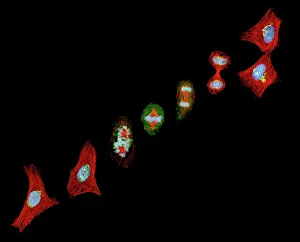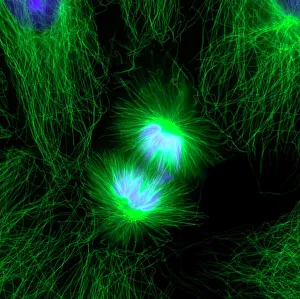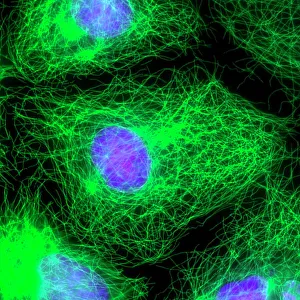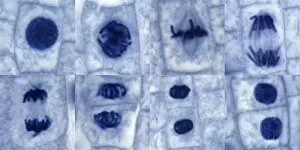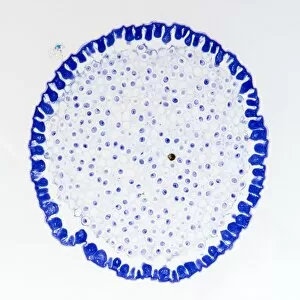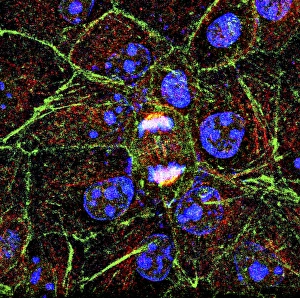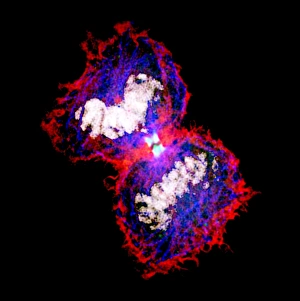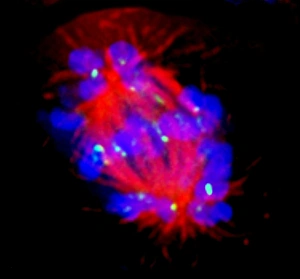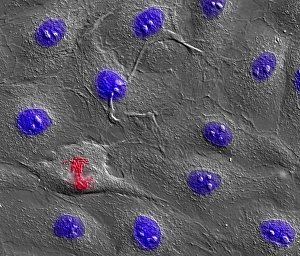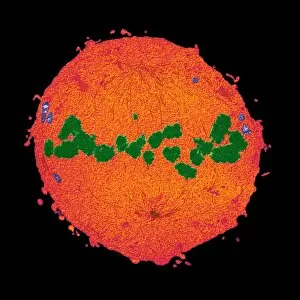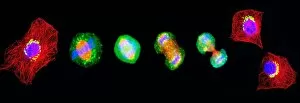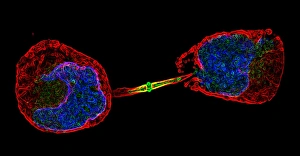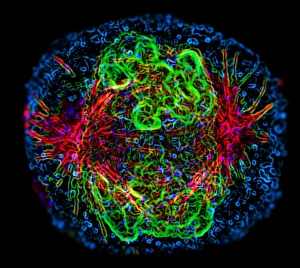Mitotic Collection
"Captivating Moments of Mitotic Cell Division Unveiled
All Professionally Made to Order for Quick Shipping
"Captivating Moments of Mitotic Cell Division Unveiled: A Glimpse into the World of Cellular Reproduction" Witness the intricate dance of life as cells divide and multiply, captured through various microscopic lenses. From light micrographs to fluorescent images, these snapshots offer a fascinating glimpse into the process known as mitosis. In one frame, observe the mesmerizing beauty of cell division under a light micrograph. The vibrant hues highlight each stage of mitosis, showcasing how cells meticulously replicate themselves to ensure growth and repair within an organism. Switching gears to fluorescent micrographs, we delve deeper into this captivating world. Fluorescent dyes illuminate dividing cells with stunning precision, revealing their inner workings like never before. Witness the remarkable symphony as chromosomes align and separate during cellular reproduction. Plant cell mitosis takes center stage in another light micrograph; here, nature's own blueprint for growth unfolds before our eyes. Delicate structures undergo precise division to create new plant tissues and enable continuous development. Even cancer cells reveal their secrets through scanning electron microscopy (SEM). Dividing liver cancer cells are magnified in astonishing detail – their abnormal proliferation becoming evident under close examination. These striking SEM images shed light on the complex nature of cancer progression. Roundworm germ cells also make an appearance in this visual journey. Through yet another set of light micrographs, witness these tiny organisms undergoing mitotic division with astounding precision and efficiency – a testament to life's resilience across species. Zooming even further down at a cellular level using transmission electron microscopy (TEM), we uncover intricate details that were once hidden from view. Dividing cells come alive in high resolution; organelles rearrange themselves while DNA replicates faithfully within each nucleus. Lastly, explore mouth cancer cell division through SEM imagery - a stark reminder that even our own bodies can succumb to uncontrolled replication processes gone awry. These powerful visuals serve as both cautionary tales and inspiration for ongoing research in the fight against cancer.

